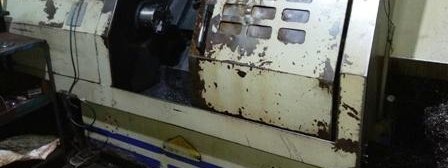
Achieving Efficiency: The Significance of Short Job Changeover Time in CNC Machine-Tending Robots
Achieving Efficiency: The Significance of Short Job Changeover Time in CNC Machine-Tending Robots
Introduction: In the manufacturing world, where time is money, optimizing productivity and reducing downtime can make all the difference. One key aspect that is crucial in maximizing efficiency in CNC machining is short job changeover time. In this blog post, we will explore the importance of minimizing changeover time in CNC machine-tending robots, focusing on how it drives enhanced productivity, flexibility, and cost-effectiveness in manufacturing processes.
Key Takeaway: You will have this robot for 15 or 20 years, or perhaps more. Robots we commissioned 15 years ago are still working well. As you read this article, think about these key points. As stated, you’ll have this robot for 15 to 20 years, perhaps more. Think about the number of jobs you’ll run over those 20 years. Like your CNC machine, your CNC machine-tending robot requires set-up time. With RoboJob and no code robots, your total job set-up time is 15 minutes or less. If you’ve run the job before and saved it, you can recall the job, and the set-up time is reduced.
If you have to program the robot before job changeover, you’ll do that for 15 or 20 years. Is that the best way to optimize your profits?
Read the rest of the article and consider the points.
Enhancing Productivity: CNC machine-tending robots can autonomously load and unload workpieces and tools, performing multiple operations in a single setup. The ability to switch between different jobs quickly enables these robots to utilize their capabilities, resulting in enhanced overall productivity. With shorter changeover times, manufacturers can swiftly change from one job to another, minimizing idle time and maximizing production output. By reducing idle periods, manufacturers can achieve more daily operational hours, significantly increasing production capacity.
Increasing Flexibility: In today's dynamic manufacturing environment, adaptability is paramount. As market demands fluctuate, manufacturers must quickly handle various part types. With their ability to handle multiple jobs, CNC machine-tending robots offer unparalleled flexibility in a production line.
A short changeover time allows manufacturers to quickly switch between different part types, materials, or operations with minimal disruption.
Furthermore, reduced changeover time enables manufacturers to cater to smaller batch sizes and even individualized customization more efficiently. Whether it's adjusting tooling, reconfiguring settings, or loading new programs, a swift changeover minimizes setup time, allowing manufacturers to stay responsive and agile in meeting diverse customer demands.
Improving Cost-Effectiveness: Short changeover times not only lead to increased productivity and flexibility but also have a significant impact on cost-effectiveness.
Machine downtime during changeovers can result in lost opportunities and reduced revenue. By reducing the time required to switch between jobs, manufacturers can maximize the utilization of their CNC machine-tending robots, optimizing the return on investment.
Moreover, shorter changeover times result in reduced tooling costs. Each time a changeover occurs, tools must be swapped out to accommodate the new job requirements.
Minimizing the duration of changeovers can help mitigate the wear and tear on tooling, ensuring their longevity and reducing the need for frequent replacement.
Efficiency gains from reduced changeover time also contribute to energy savings. Unnecessary machine idling consumes energy without adding any value to the production process.
By minimizing idle time, manufacturers can curtail energy consumption, leading to cost savings and a greener manufacturing operation.
Conclusion: In the realm of CNC machining, where precision, speed, and adaptability are fundamental, minimizing changeover time in machine-tending robots is paramount. The advantages of short job changeover times, including enhanced productivity, increased flexibility, and improved cost-effectiveness, make it imperative for manufacturers to invest in optimizing this aspect of their operations.
Technological advancements, such as sophisticated tooling systems, automated programming, and intelligent robot control, have made it possible to achieve substantially shorter changeover times. Embracing these innovative solutions empowers manufacturers with the ability to respond swiftly to evolving market requirements, capitalize on diverse opportunities, and maintain a competitive edge.
By continuously striving to reduce changeover times, manufacturers can unlock the full potential of their CNC machine-tending robots, paving the way for streamlined and efficient manufacturing processes.